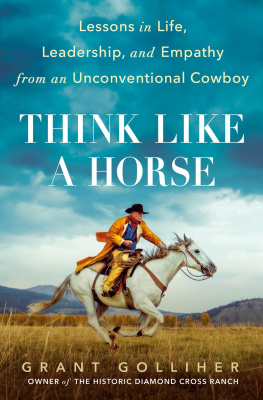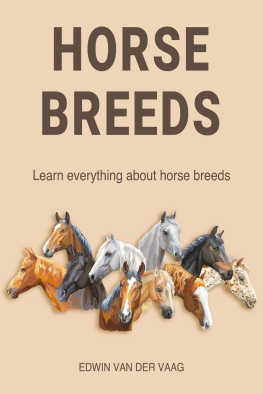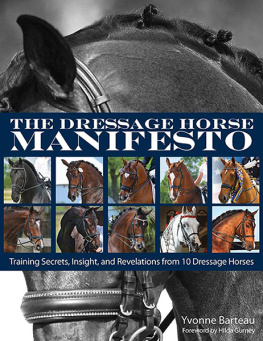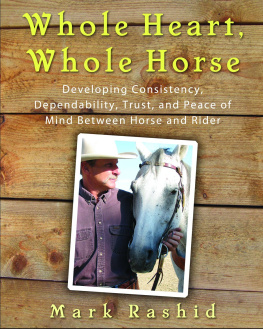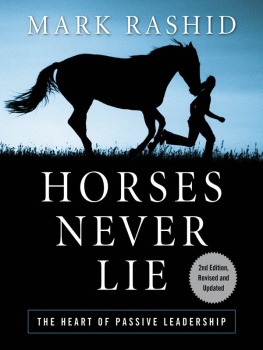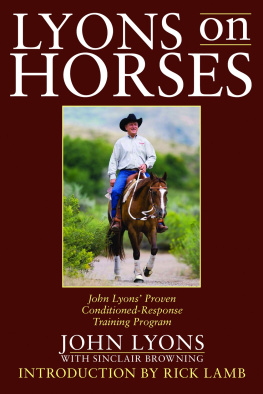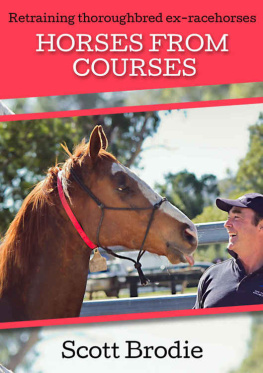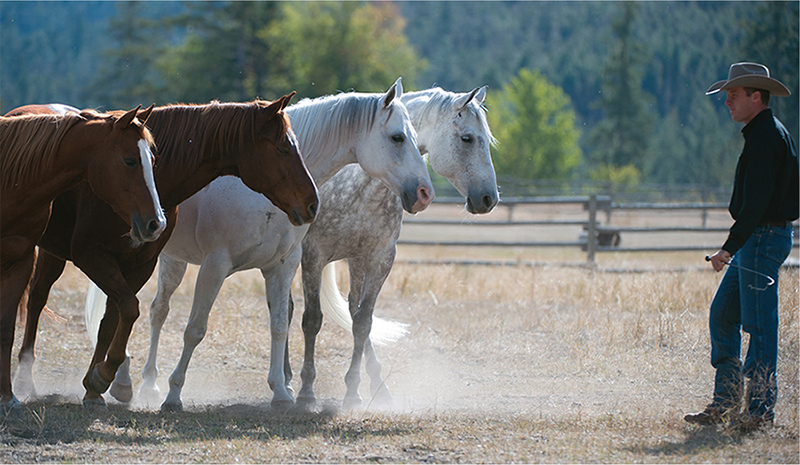The Art of
Liberty Training
for Horses
Attain New Levels of Leadership, Unity, Feel, Engagement,
and Purpose in All You Do with Your Horse
Jonathan Field
Photography by Robin Duncan
First published in 2014 by
Trafalgar Square Books
North Pomfret, Vermont 05053
Copyright 2014 Jonathan Field
All rights reserved. No part of this book may be reproduced, by any means, without written permission of the publisher, except by a reviewer quoting brief excerpts for a review in a magazine, newspaper, or website.
Disclaimer of Liability
The author and publisher shall have neither liability nor responsibility to any person or entity with respect to any loss or damage caused or alleged to be caused directly or indirectly by the information contained in this book. While the book is as accurate as the author can make it, there may be errors, omissions, and inaccuracies.
Trafalgar Square Books encourages the use of approved safety helmets in all equestrian sports and activities.
Library of Congress Cataloging-in-Publication Data
Field, Jonathan, 1977
The art of liberty training for horses : attain new levels of leadership, unity, feel, engagement, and purpose in all that you do with your horse / Jonathan Field.
pages cm
Includes index.
ISBN 978-1-57076-689-3
1. HorsesTraining. I. Title.
SF287.F46 2014
636.1'0835dc23
2014026266
All photographs by Robin Duncan except pp. 79, p. 20 (top), p. 21 (top left) courtesy of JFH Collection.
Book design by DOQ
Cover design by RM Didier
Index by Andrea M. Jones (www.jonesliteraryservice.com)
eBook design by Prabhati Content
Typefaces: Clarendon LT and Scala Sans Pro
Printed in China
10 9 8 7 6 5 4 3 2 1
TO ALL THOSE INSPIRED BY HORSES
Contents
Four-Horse Liberty FunA Candid Play Session
(Dont Try at Home. Seriously, Dont!)
Liberty Concepts and Terms
Before you read this book Id like to explain some of my concepts and the terms I use, which are personal and specific to my liberty training methods.
The Primary Equine Language. There are four ingredients that individually or in combination make up all the ways you can approach communication with the horse, on the ground or while riding: neutral/active neutral and friendly are about helping the horse relax, while touch and driving are ways to sensitize the horse to move away from you, using your body language and ultimately just your intentthat is, without any pressure.
1. Neutral and Active Neutral. These are all about relaxation in horses. In neutral the horse is at standstill with easein his sweet spot (see p. x). In active neutral he is in relaxation while moving. A horse not in neutral may be pawing, calling, and not standing still. And a horse not in active neutral can be over-energized and rushing forward, jigging, and prancing, or he can be the opposite: too slow, heavy to aids, and not moving willingly and easily.
2. Friendly. There are two parts to friendly: First, it is about you being friendly with a horse so he sees you as an ally, not an enemy. You must find a friendly feeling in you that is real because the horse is reading your body language and will respond accordingly. Smile or relax and find a way to rub or stroke a horse (not a pat: there is no patting in his natural world and a pat can be considered predatory) so that he relaxes and softens as well. Second, it is about teaching him to feel friendly toward objects that worry him. When he sees a scary item, take time to show the horse it is friendly, whether, for example, it is a plastic bag, rope, or saddle blanket.
3. Driving. First, driving causes a horse to move away from a rhythmical pressure, such as a waving hand, stick, or rope. Second, driving is also used to describe the driving pressure you use in the form of touch, or tapping to move your horse backward, or his shoulders over to the right, for example. Third, driving is sensitizing the horse to your body language by pressing into his personal space (the bubble around him) with intent.
4. Touch. This means to ask a horse to move away from a physical pressure of your hand, halter, and lead rope, and when being ridden, to ask the horse to yield away from the touch of a leg aid or rein aid. It is about having a horse yield willingly away from a soft, steady pressure on any part of his body.
NOTE: The key to driving and touch stimuli is to always start out with the very least amount: First its your intent, then you can slowly and incrementally increase the level of pressure until the horse makes the slightest try to where you want him to go. Then release all pressure. Done correctly, the amount of pressure needed will become less and less until you are communicating with what you started with: your intent.
Draw and Drive. These two words refer to the desire in horse to either want to be with you (draw) or away from you (drive). A delicate balance of draw and drive is what causes liberty training to work: when you have too much draw with a horse, he is too close and can run you over. When too much drive, the horse doesnt want to be with you and will run off, not wanting to return. This is a constantly changing dynamic when you play with a horse from the ground. You must learn to have a feel for the horses state of mind and which ingredientdraw or driveyou need more of at any particular moment.
Intent/Intention. This is subtle communication without any pressure. It is something you learn to read in the horse you are handling, and intent is also in your body language when you want to communicate with your horse to do a movement. This intention is backed by a certainty inside you that your plan will happen; it is not a hope or fleeting thought. Horses read the body intention of everyone around them, constantly. If you are back and forth with no plan, you have no intent, and therefore, will not become the leader. When you communicate just from intent, there is no pressure from touch or driving (see p. ix) required to back it up: You are now playing with your horse the way horses do when they are synced together. The goal in liberty training is to get past the pressure stages to the ultimate level of communication where the horse responds just from your intent.
Sweet Spot. Picture a herd of horses or flock of birds moving as one: All the horses and birds are in active neutral with one another, there is overall peace and harmony, and each creature is relaxed in what I call its sweet spot or comfort zone. When playing with your horse, you can pick a


